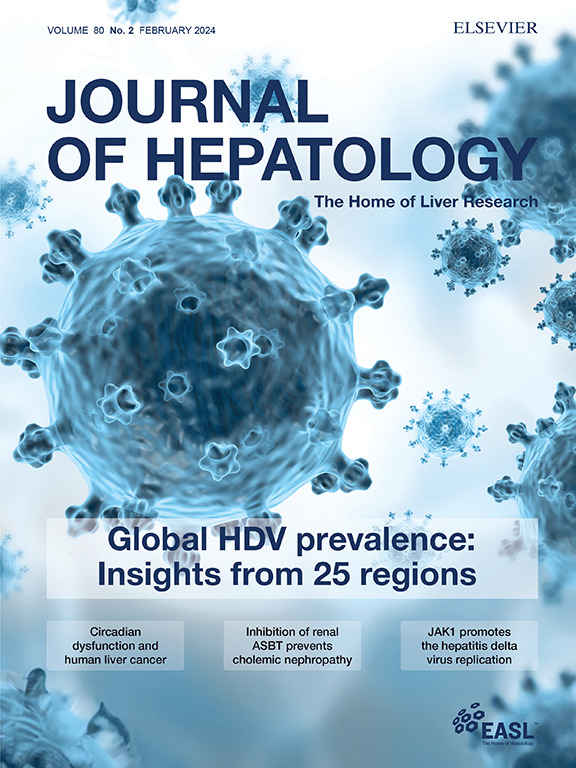2024年更新的世卫组织慢性乙型肝炎预防和管理指南:对下一个主要肝脏学会临床实践指南的主要变化和潜在影响
IF 33
1区 医学
Q1 GASTROENTEROLOGY & HEPATOLOGY
引用次数: 0
摘要
全球消除乙型肝炎病毒(HBV)的进展缓慢,大多数国家远未达到世界卫生组织(世卫组织)制定的消除目标。慢性乙型肝炎的负担主要由资源有限的国家承担,在这些国家,只有少数乙型肝炎病毒感染者得到诊断和治疗,国际指南在现实生活中很难适用。2024年3月,世卫组织发布了经修订的慢性乙型肝炎预防和管理指南。简化护理和扩大治疗标准是此次修订的核心。这些更新的世卫组织指南是否以及如何影响国际肝脏学会(EASL、AASLD和APASL)提出下一个乙肝建议仍不确定。然而,欧洲、美洲和亚洲地区包括HBV高流行的多个低收入、中等收入国家和弱势人群,这些国家应该从简化的临床算法中受益。在此,通过对世卫组织指南制定过程及其新建议的分析,我们旨在确定与下一个肝脏学会乙型肝炎指南的预期协议和争议领域,这些指南必须平衡患者的临床风险和收益。本文章由计算机程序翻译,如有差异,请以英文原文为准。
The 2024 updated WHO guidelines for the prevention and management of chronic hepatitis B: Main changes and potential implications for the next major liver society clinical practice guidelines
Progress towards global elimination of hepatitis B virus (HBV) has been slow and most countries are far from reaching the elimination targets set out by the World Health Organization (WHO). The burden of chronic hepatitis B is mainly borne by resource-limited countries where only a minority of people living with HBV are diagnosed and treated, and international guidelines are hardly applicable in real-life. In March 2024, the WHO released its revised guidelines for the prevention and management of chronic hepatitis B. Simplification of care and expansion of treatment criteria represent the core of this revision. Whether and how these updated WHO guidelines will influence the next hepatitis B recommendations from the international liver societies (EASL, AASLD and APASL) remain uncertain. Yet, the European, American and Asian regions encompass multiple low, middle and intermediate-income countries with high HBV endemicity and vulnerable populations that should benefit from simplified clinical algorithms. Here, from an analysis of the WHO guideline development process and its new recommendations, we aimed to identify the anticipated areas of agreement and controversies with the next liver society hepatitis B guidelines, which will have to balance clinical risks and benefits for patients.
求助全文
通过发布文献求助,成功后即可免费获取论文全文。
去求助
来源期刊

Journal of Hepatology
医学-胃肠肝病学
CiteScore
46.10
自引率
4.30%
发文量
2325
审稿时长
30 days
期刊介绍:
The Journal of Hepatology is the official publication of the European Association for the Study of the Liver (EASL). It is dedicated to presenting clinical and basic research in the field of hepatology through original papers, reviews, case reports, and letters to the Editor. The Journal is published in English and may consider supplements that pass an editorial review.
 求助内容:
求助内容: 应助结果提醒方式:
应助结果提醒方式:


